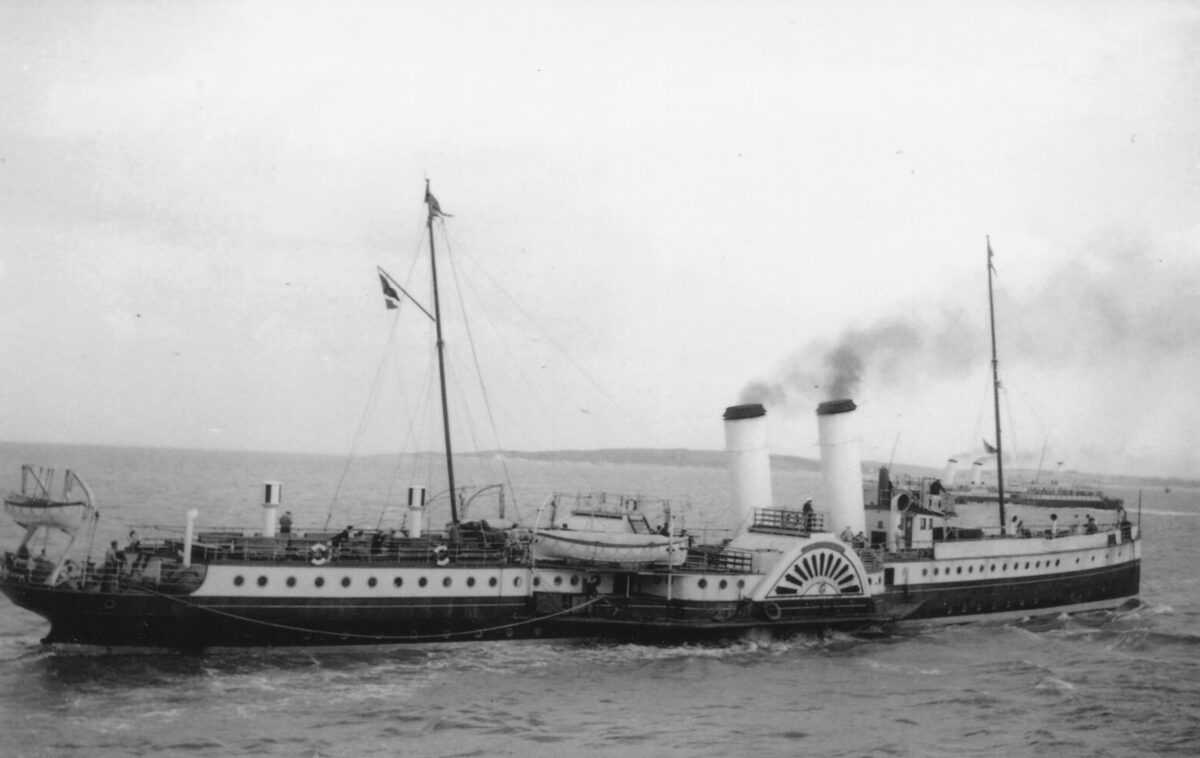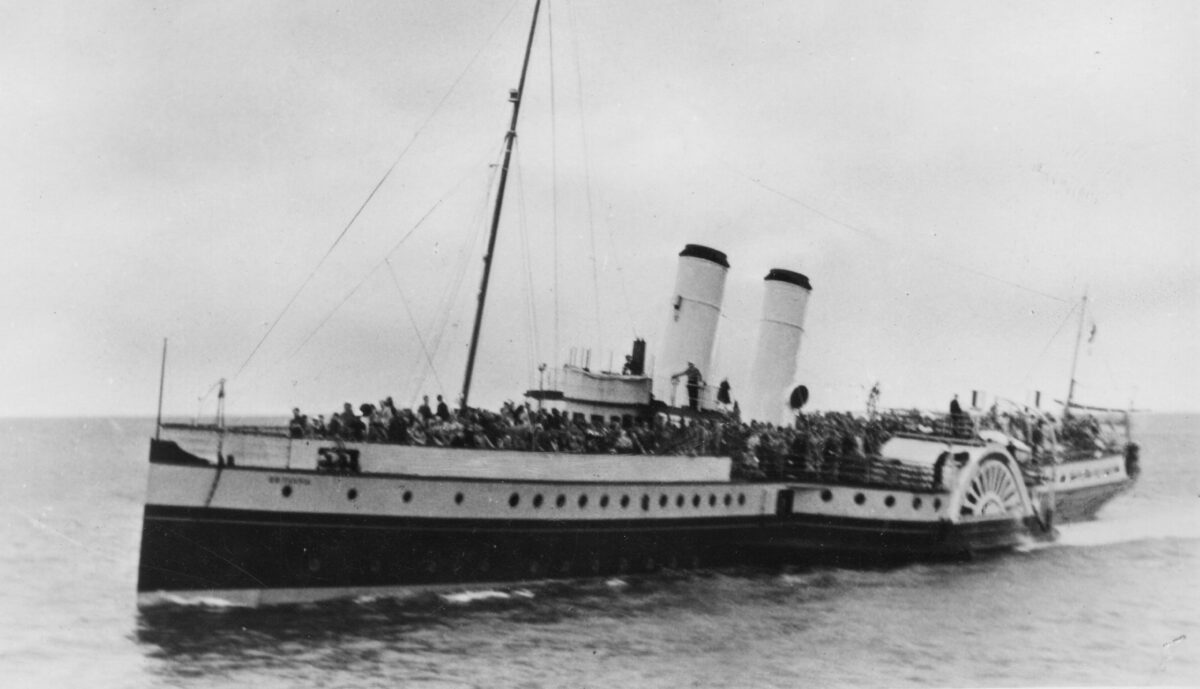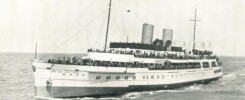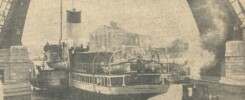
On Tuesday 24th January 1950 P & A Campbell’s Britannia was towed back to drydock in Bristol only eight days after she had left it. The fact that this was a Tuesday is significant I think.
When she had come out of the drydock the previous week soundings would have been taken of all her bilge compartments to check that she was not making water. I did this always when KC came off the slipway just to check that all was well. I also made it my business to check, on a daily basis whenever I came aboard or went ashore, the draft fore and aft to make sure that she was floating correctly on her marks. It is something which becomes instinctive in any experienced master. It is not that you are expecting anything to go wrong. But if it does you want to know about it before it becomes serious.
However a small leak may let small quantities of water into the hull which are not initially very obvious. Small amounts of water don’t make much difference to a ship’s draft. But over time small amounts of water turn into larger amounts of water. In Britannia’s case a small leak would not have shown up very obviously at first. But I can just see her master Captain E C Phillips coming aboard first thing on the following Monday morning and with a sinking heart noticing that she was a little bit down on her marks. The bilges would have been checked again. Water would have been found so it was on the telephone to the shipyard straight away to book another slot. It was Britannia’s good fortune that the dry-dock was available to take her once again on Tuesday 24th January.

It turned out that some of the rivets in the hull had started to leak. This happens sometimes particularly in an elderly hull. And in 1950 Britannia’s hull was fifty four years old. That is a great age for a ship designed for a life span of about twenty five years.
It is no a great matter if one or two rivets out of the thousands holding a ship’s hull together are leaking a little bit so long as you can pump the water out faster than it is coming in. Even if a rivet falls out after its head has corroded away it is not a big issue. To stop the leak you can just bang a wooden plug of suitable size, maybe even a bit of a sawn off broomstick handle, and that will stem the flow. A better get you home solution is to float out a cork through the hole in the bottom on a piece of string. When it floats to the surface attach a bolt of suitable size to the string and then draw this back in through the hole. Put a washer on the bolt now positioned in the hole and screw it down tightly with a nut. And there you are. It is not ideal but it will get you home.
When in drydock you have to find the offending leaky rivet/rivets. You will know roughly the area affected by where the water is in the bilge. A visual inspection of the hull might reveal the specific issue but you could also play a hose in the area of the bilge affected and see where it is starting to get damp on the outside of the hull to find the specific leak. And when you think it is fixed then you need to play a hose on the outside of the hull with someone inside the bilge to check if any of it is coming through.
And so it was with Britannia which left the drydock a couple of days later with her leaky rivets fixed.
Kingswear Castle returned to service in 2023 after the first part of a major rebuild which is designed to set her up for the next 25 years running on the River Dart. The Paddle Steamer Kingswear Castle Trust is now fund raising for the second phase of the rebuild. You can read more about the rebuilds and how you can help if you can here.
John Megoran
This article was first published on 24th January 2021.


